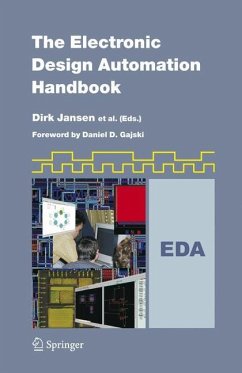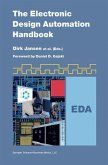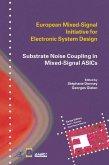When I attended college we studied vacuum tubes in our junior year. At that time an average radio had ?ve vacuum tubes and better ones even seven. Then transistors appeared in 1960s. A good radio was judged to be one with more thententransistors. Latergoodradioshad15-20transistors and after that everyone stopped counting transistors. Today modern processors runing personal computers have over 10milliontransistorsandmoremillionswillbeaddedevery year. The difference between 20 and 20M is in complexity, methodology and business models. Designs with 20 tr- sistors are easily generated by design engineers without any tools, whilst designs with 20M transistors can not be done by humans in reasonable time without the help of Prof. Dr. Gajski demonstrates the Y-chart automation. This difference in complexity introduced a paradigm shift which required sophisticated methods and tools, and introduced design automation into design practice. By the decomposition of the design process into many tasks and abstraction levels the methodology of designing chips or systems has also evolved. Similarly, the business model has changed from vertical integration, in which one company did all the tasks from product speci?cation to manufacturing, to globally distributed, client server production in which most of the design and manufacturing tasks are outsourced.
From the reviews:
"In such a changing environment this Handbook on Electronic Design Automation represents a welcome help for the practitioners of the system design as well as for students taking courses in the same area. The Handbook surveys the main tasks of system design methodology, explains different methods and tools for design specification, synthesis, simulation, and verification, introduces hardware description languages and modeling practices, and introduces techniques for the design of circuits, modules and systems on different levels of abstraction. The main advantage of this Handbook is that readers quickly obtain a good overview of the design methodologies and of the design automation field as a whole, instead of only one aspect of it.
For this reason, I sincerely welcome this book and recommend it highly to all practitioners in the field of designing and building electronic systems."
(From the Foreword: Daniel D. Gajski)
"Since the environment is changing in the Electronic Design Automation (EDA) industry with amazing speed, this handbook on EDA represents an appreciated help for the practitioners in system design ... . covers (at least) the minimum knowledge one must know today to design modern electronics with computer programs effectively. ... The main advantage of this handbook is that readers may quickly obtain a good overview of the design automation field ... . This is why this book is highly recommended ... ." (Neculai Curteanu, Zentralblatt MATH, Vol. 1044 (19), 2004)
"The Electronic Design Automation Handbook by Dirk Jansen ... endeavors to create a compendium that integrates basic knowledge from a variety of areas in EDA, providing a 'one-stop shop' that overviews the field. ... the book has many aspects that provide good value to the reader. ... it must be said that this book covers a great deal of ground, and makes a sincere effort in doing so. It's a very good source fordesign and EDA practitioners, and students ... ." (Sachin Sapatnekar, IEEE Design & Test of Computers, 2005)
"In such a changing environment this Handbook on Electronic Design Automation represents a welcome help for the practitioners of the system design as well as for students taking courses in the same area. The Handbook surveys the main tasks of system design methodology, explains different methods and tools for design specification, synthesis, simulation, and verification, introduces hardware description languages and modeling practices, and introduces techniques for the design of circuits, modules and systems on different levels of abstraction. The main advantage of this Handbook is that readers quickly obtain a good overview of the design methodologies and of the design automation field as a whole, instead of only one aspect of it.
For this reason, I sincerely welcome this book and recommend it highly to all practitioners in the field of designing and building electronic systems."
(From the Foreword: Daniel D. Gajski)
"Since the environment is changing in the Electronic Design Automation (EDA) industry with amazing speed, this handbook on EDA represents an appreciated help for the practitioners in system design ... . covers (at least) the minimum knowledge one must know today to design modern electronics with computer programs effectively. ... The main advantage of this handbook is that readers may quickly obtain a good overview of the design automation field ... . This is why this book is highly recommended ... ." (Neculai Curteanu, Zentralblatt MATH, Vol. 1044 (19), 2004)
"The Electronic Design Automation Handbook by Dirk Jansen ... endeavors to create a compendium that integrates basic knowledge from a variety of areas in EDA, providing a 'one-stop shop' that overviews the field. ... the book has many aspects that provide good value to the reader. ... it must be said that this book covers a great deal of ground, and makes a sincere effort in doing so. It's a very good source fordesign and EDA practitioners, and students ... ." (Sachin Sapatnekar, IEEE Design & Test of Computers, 2005)








